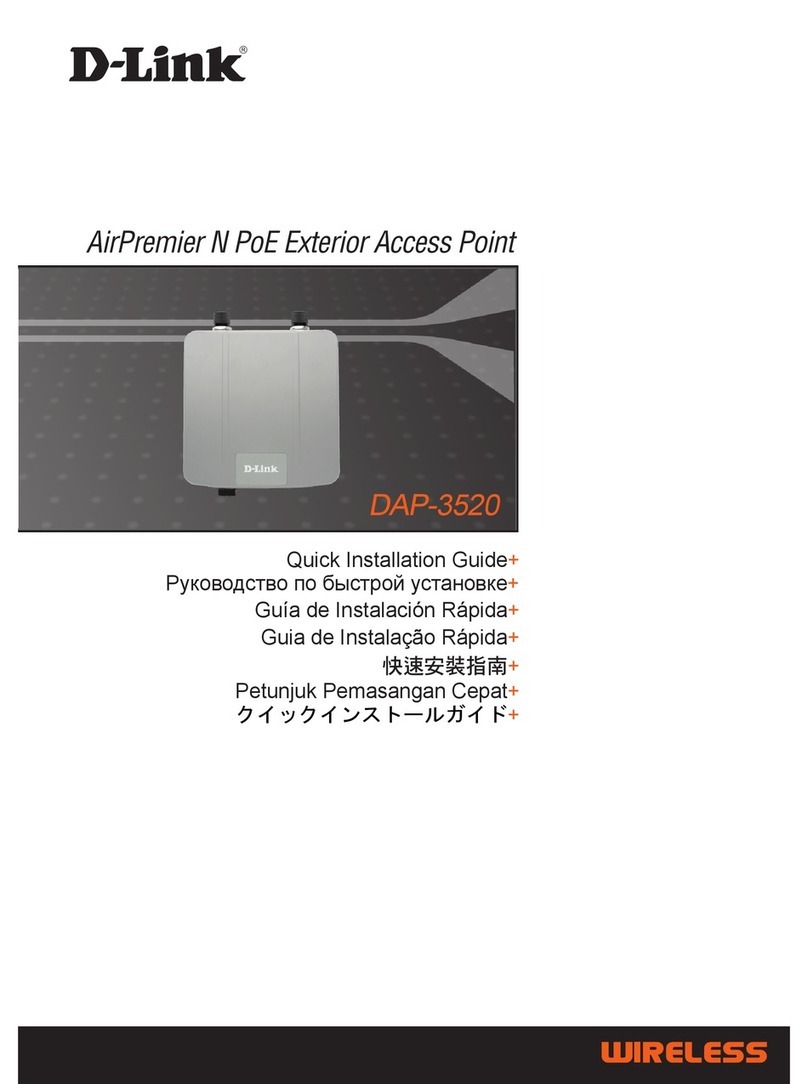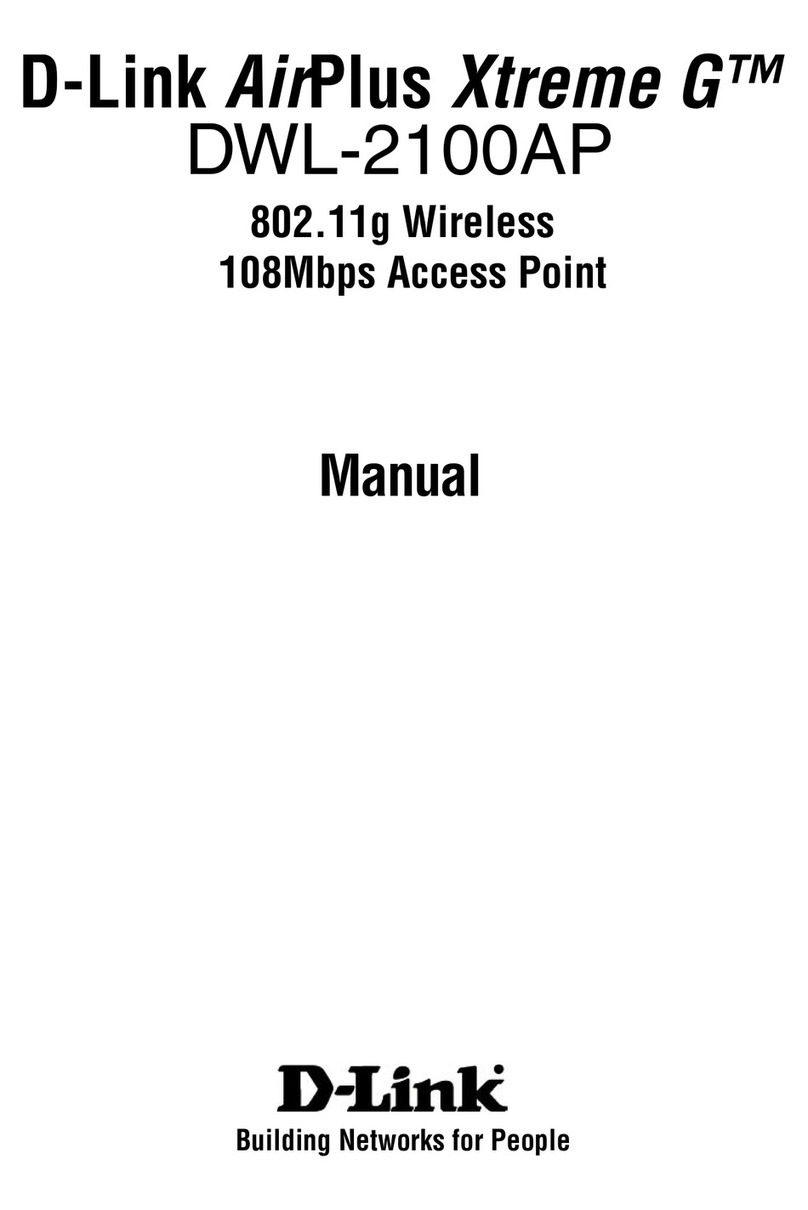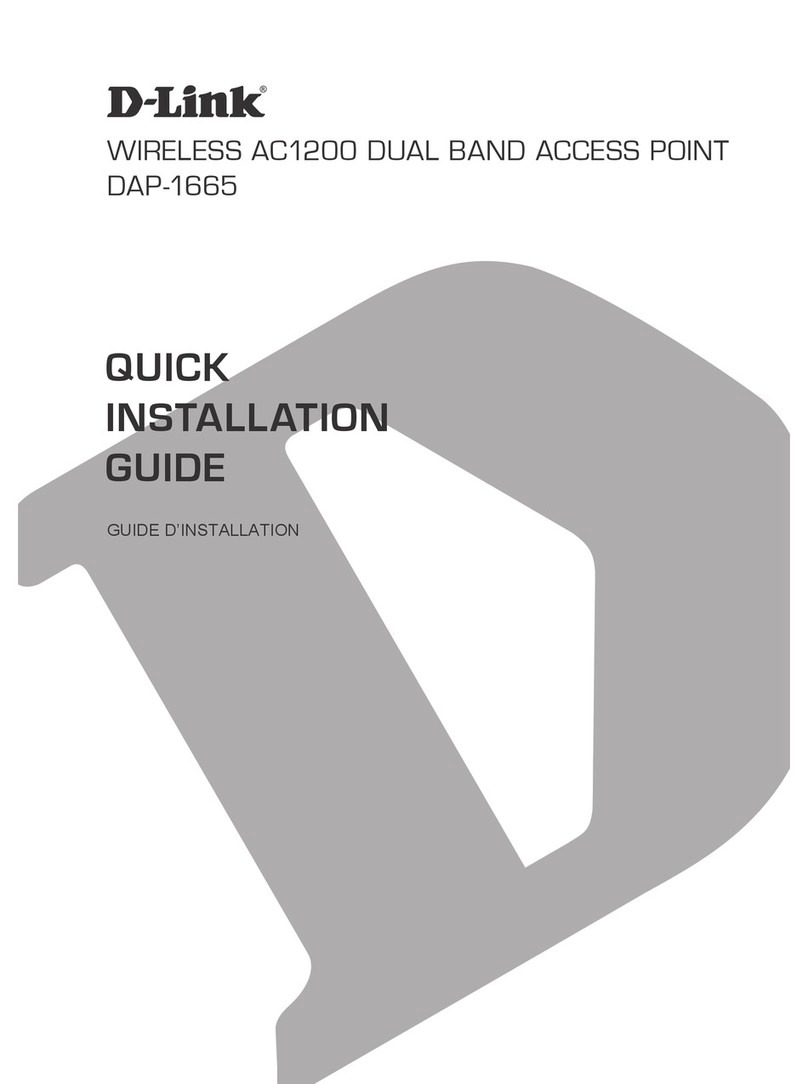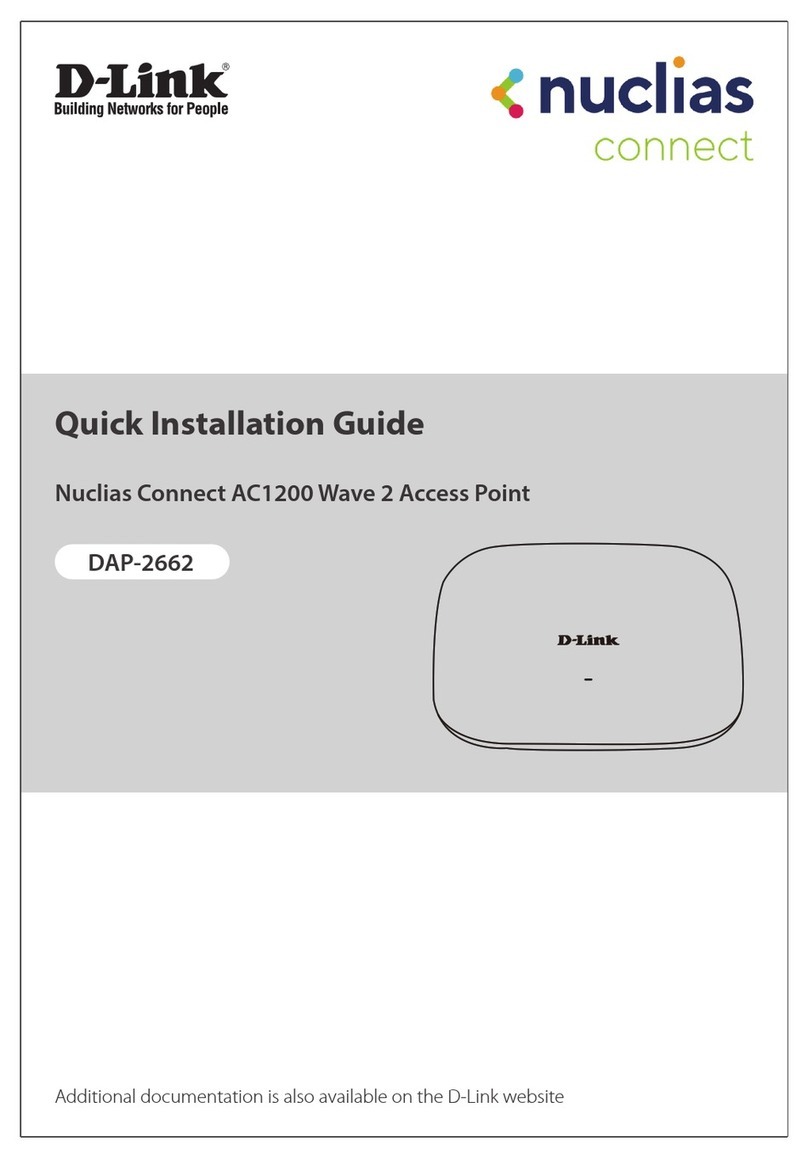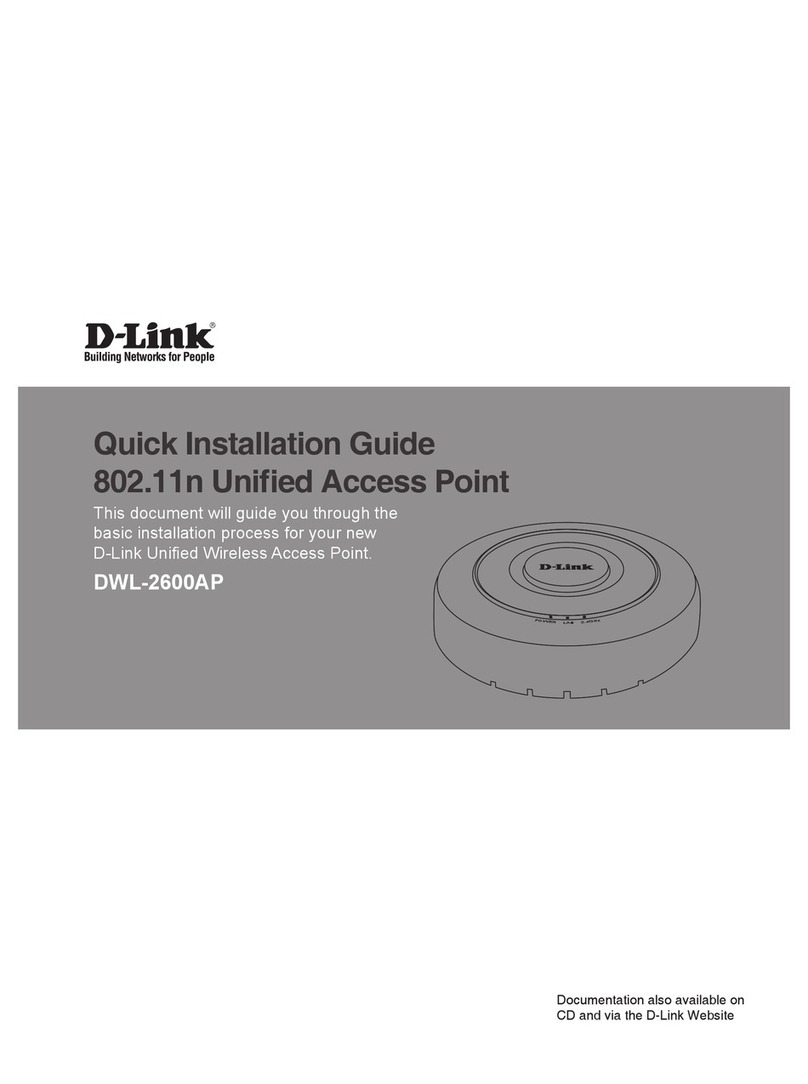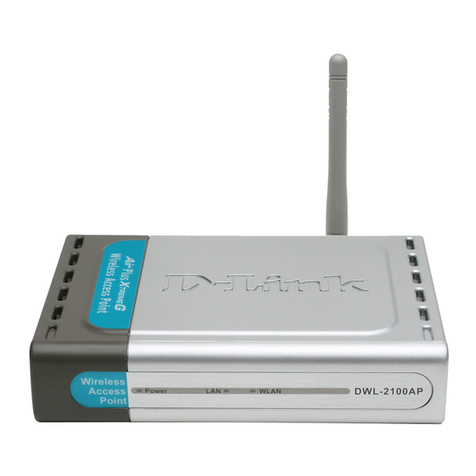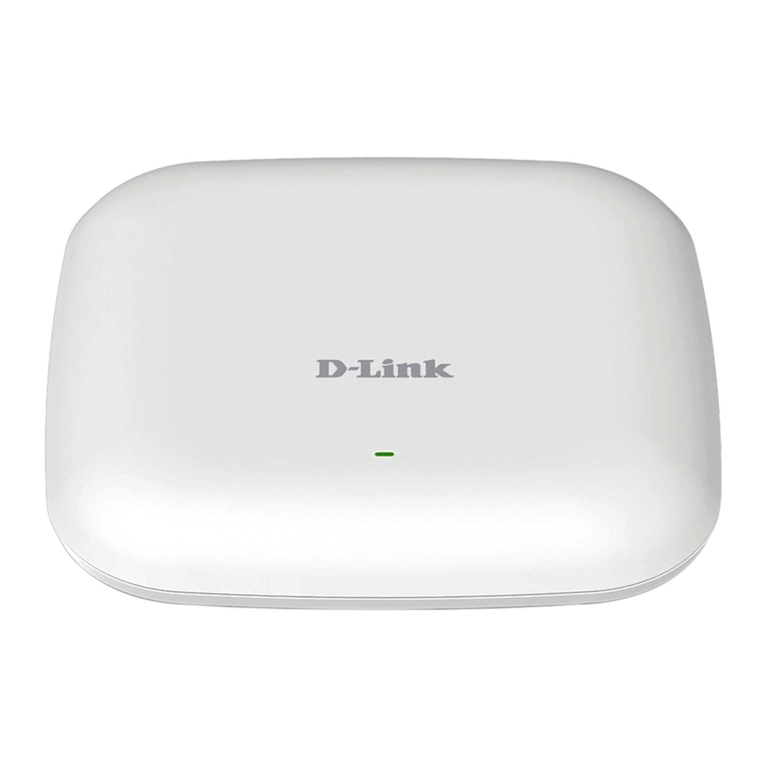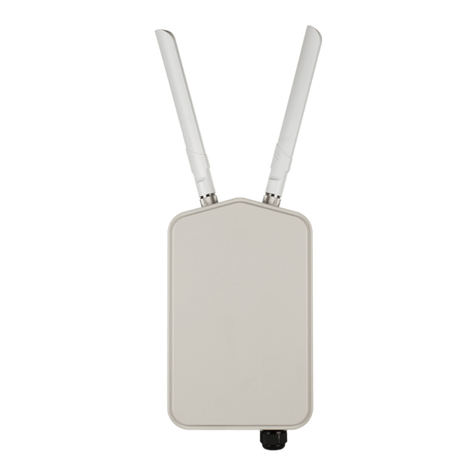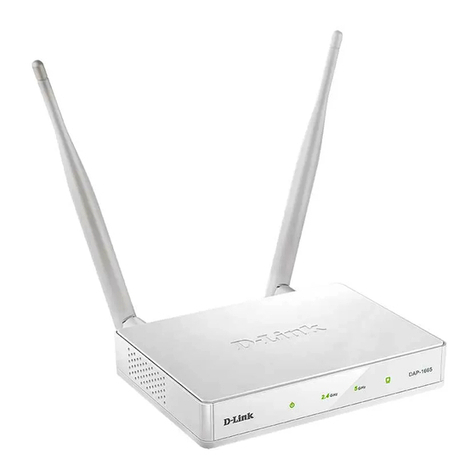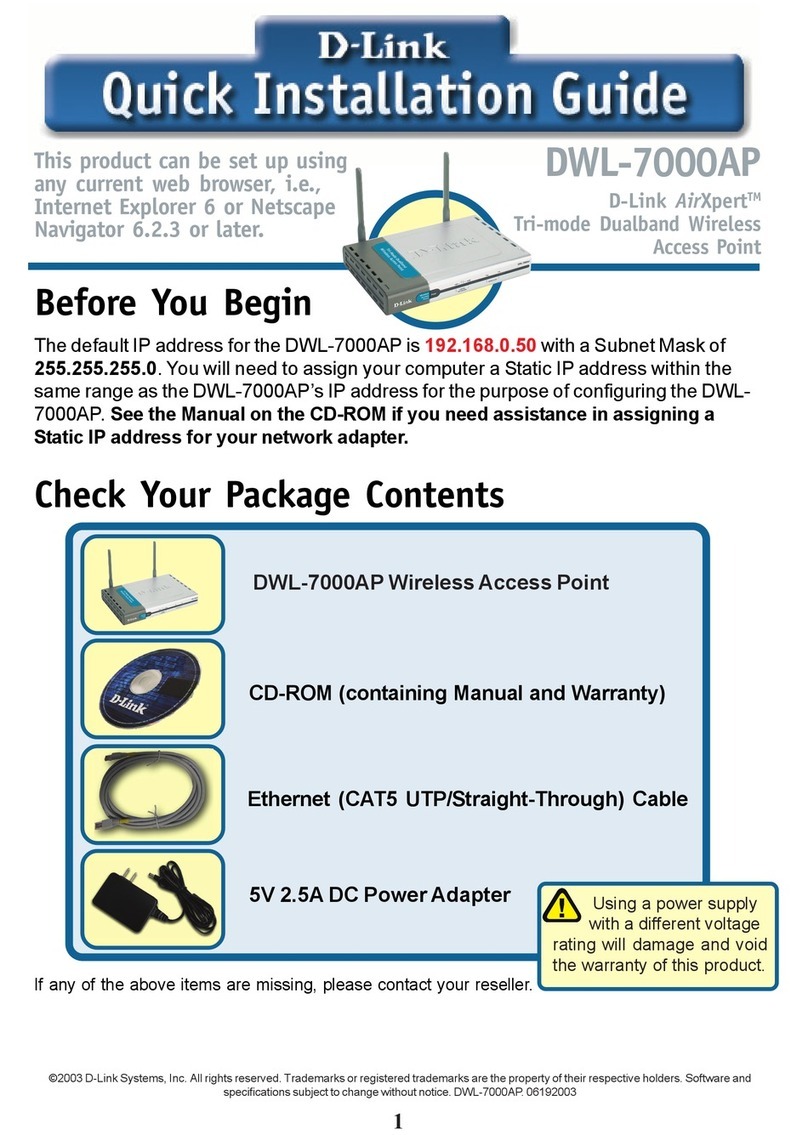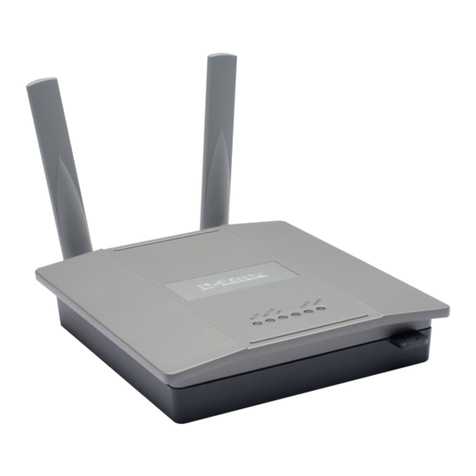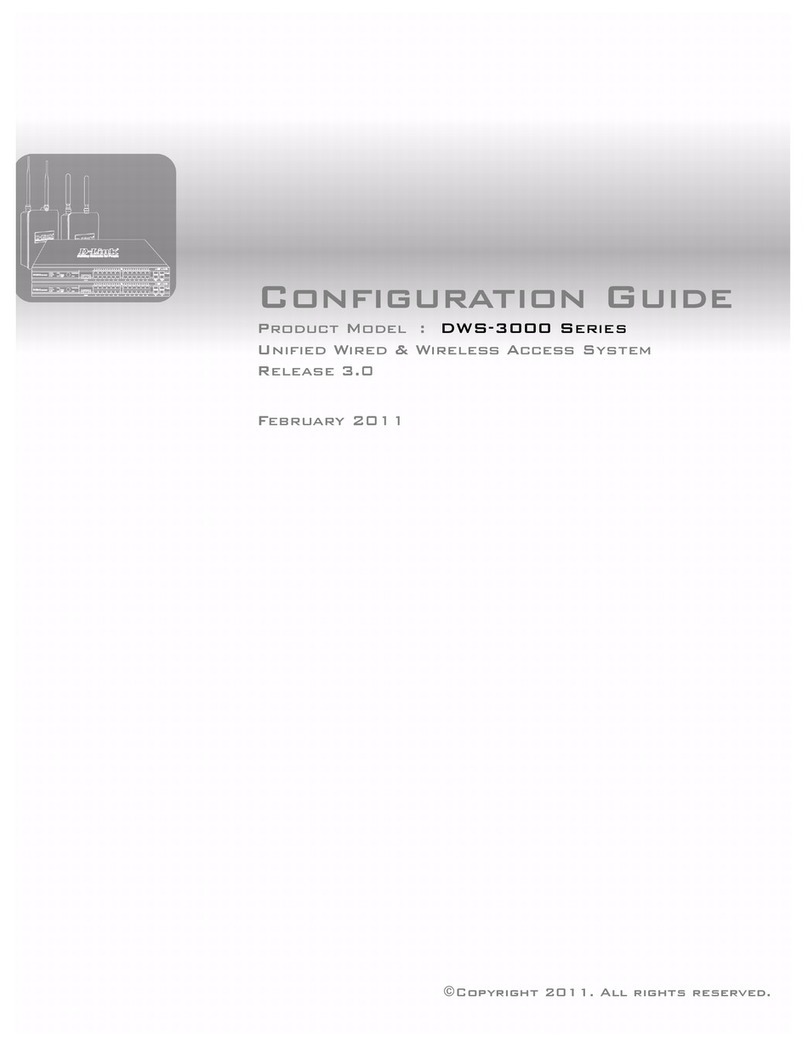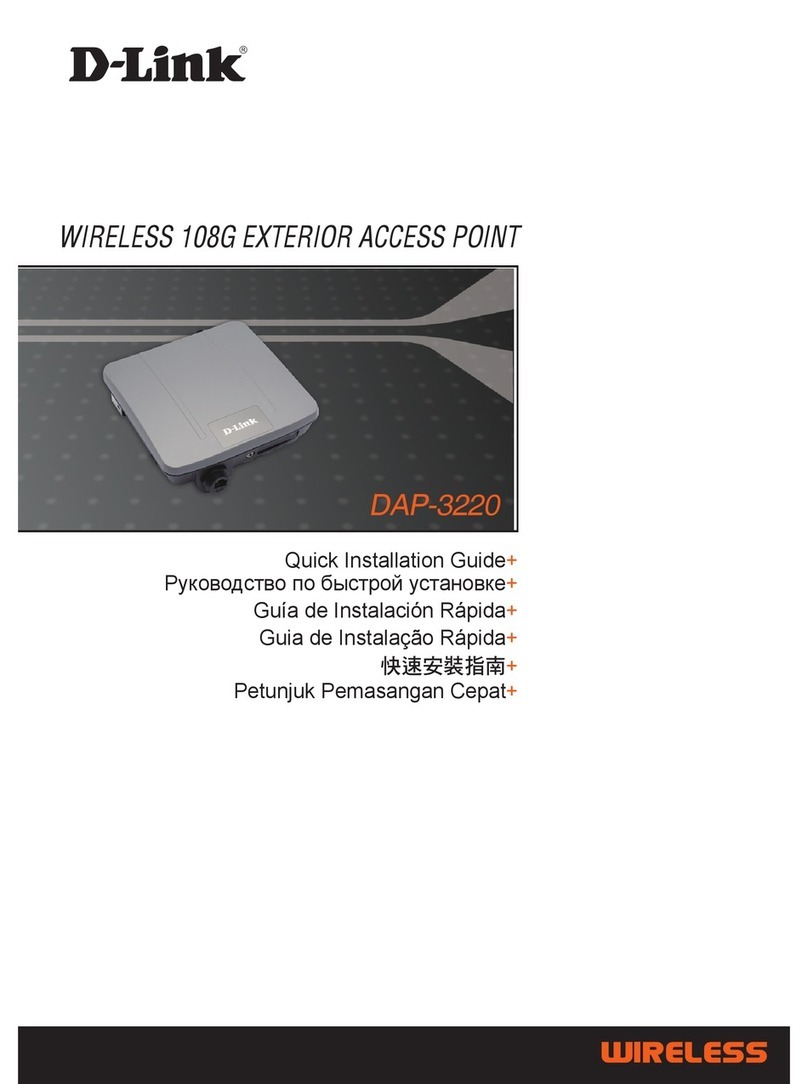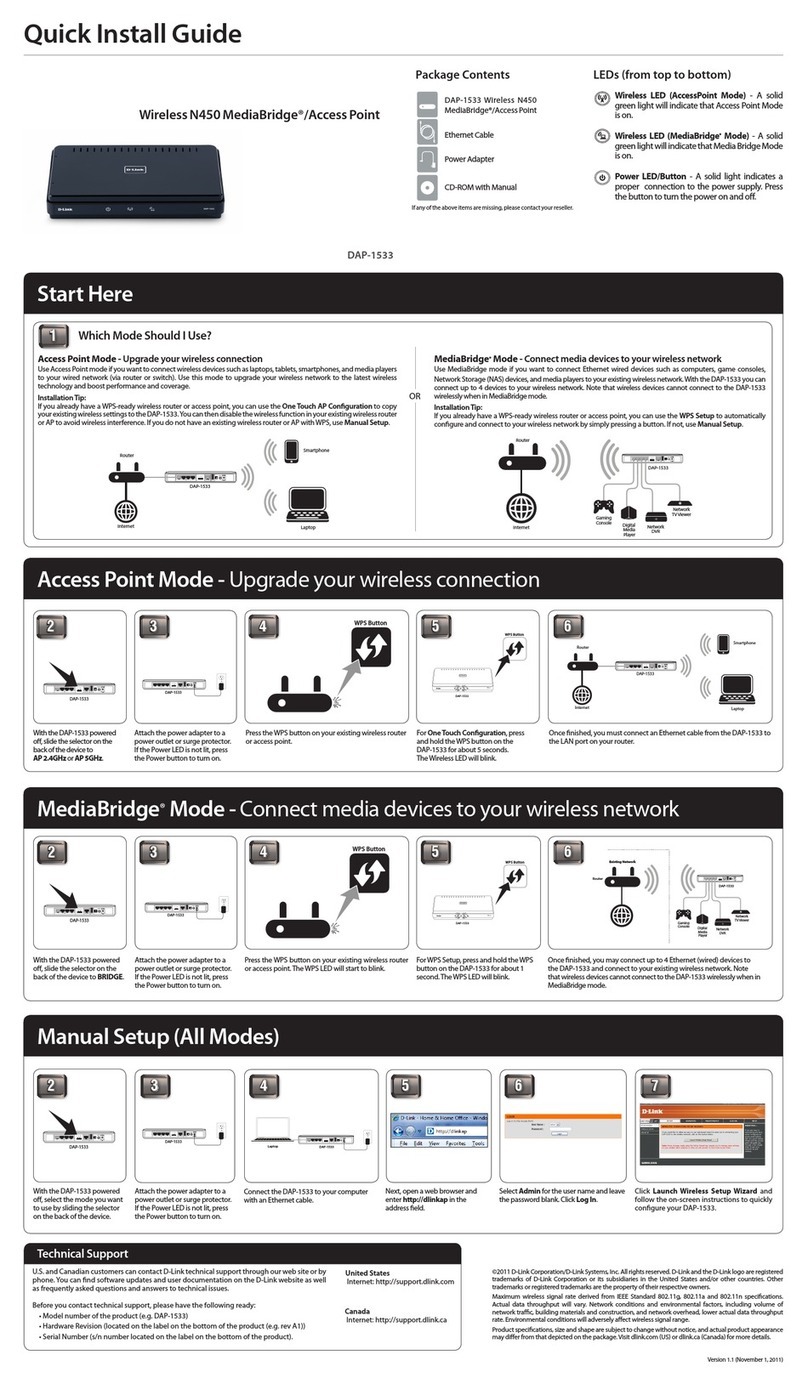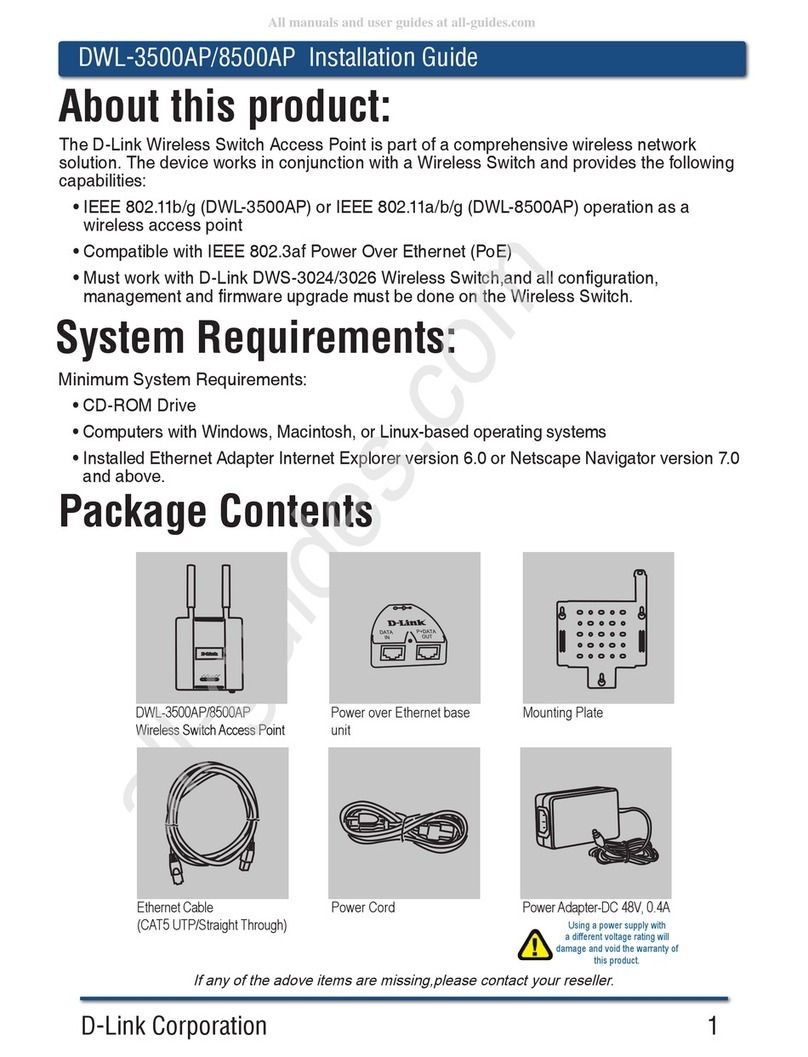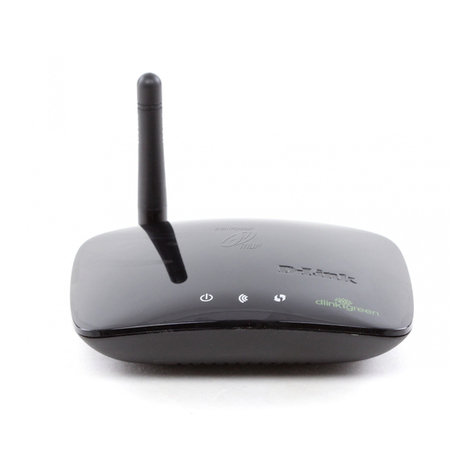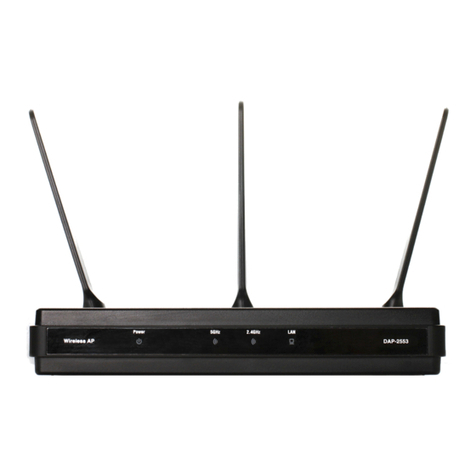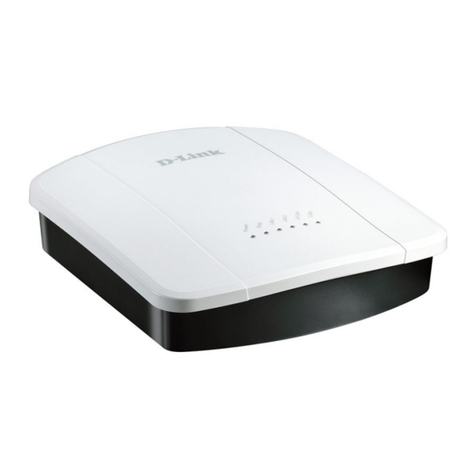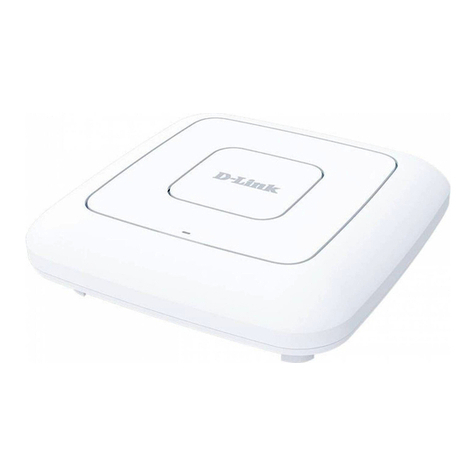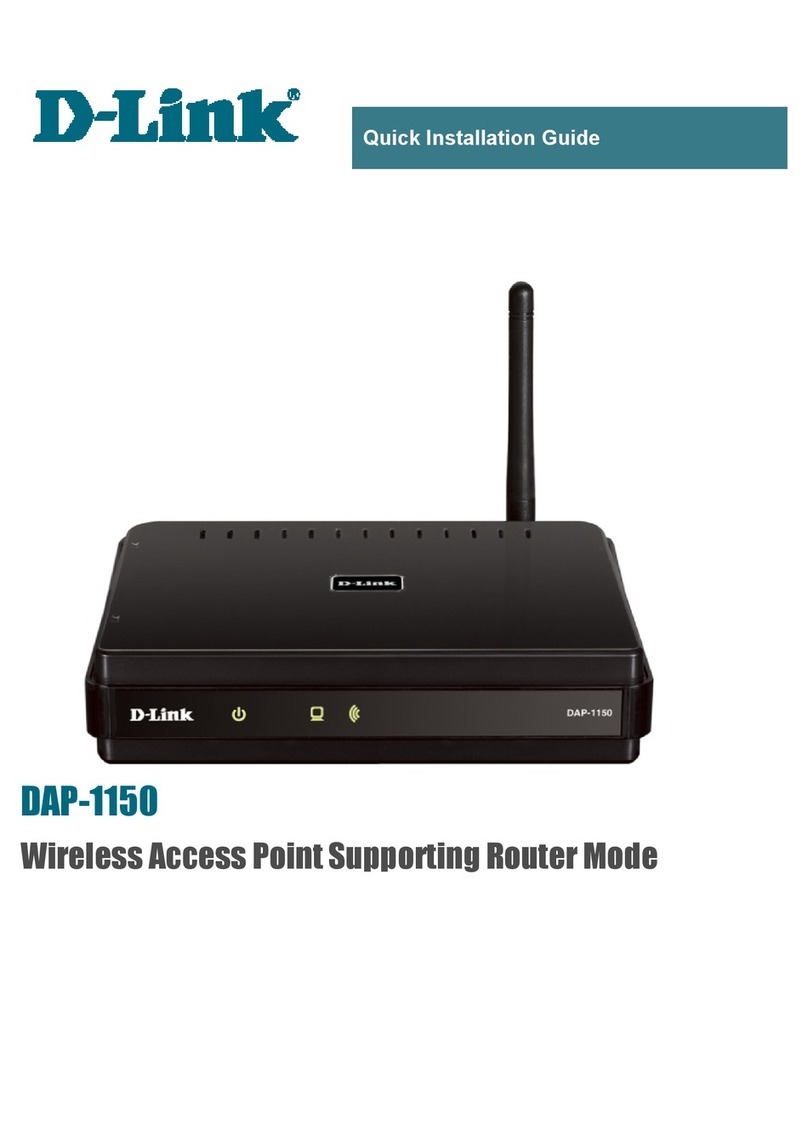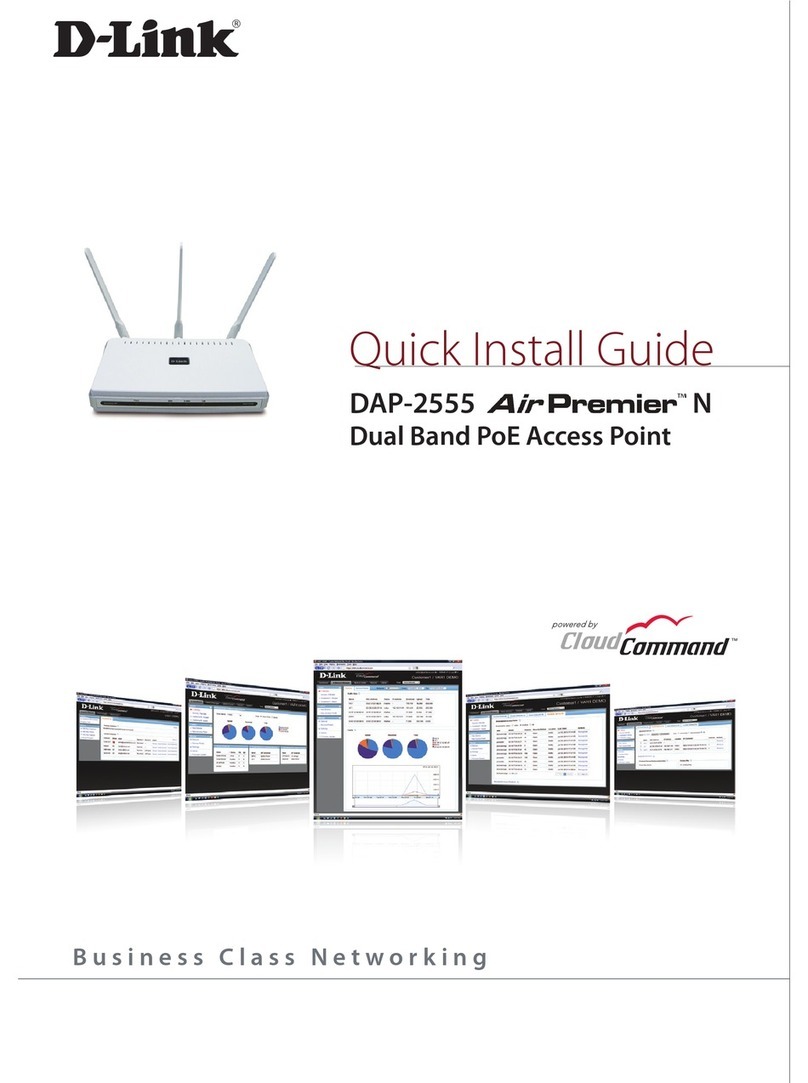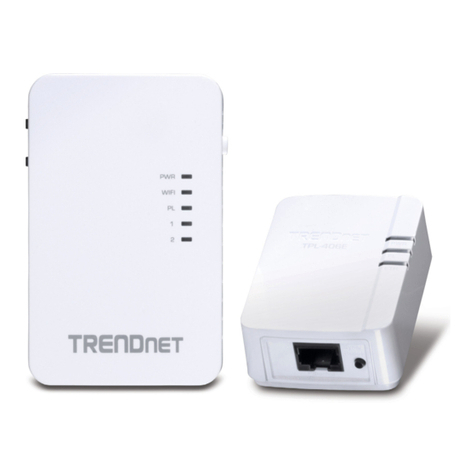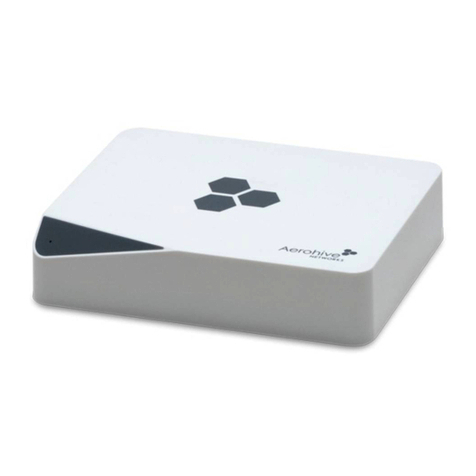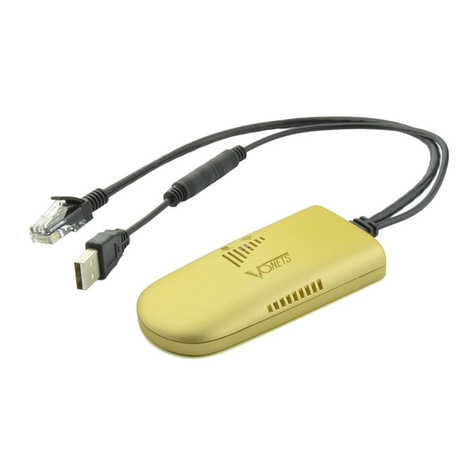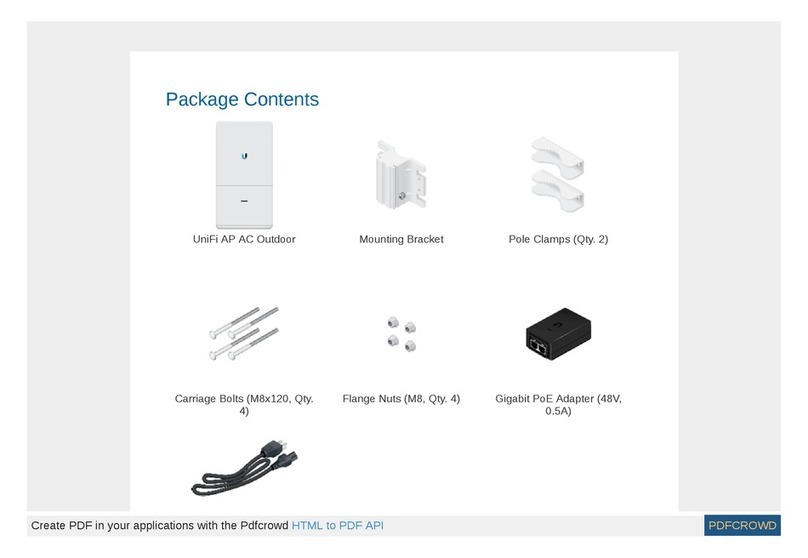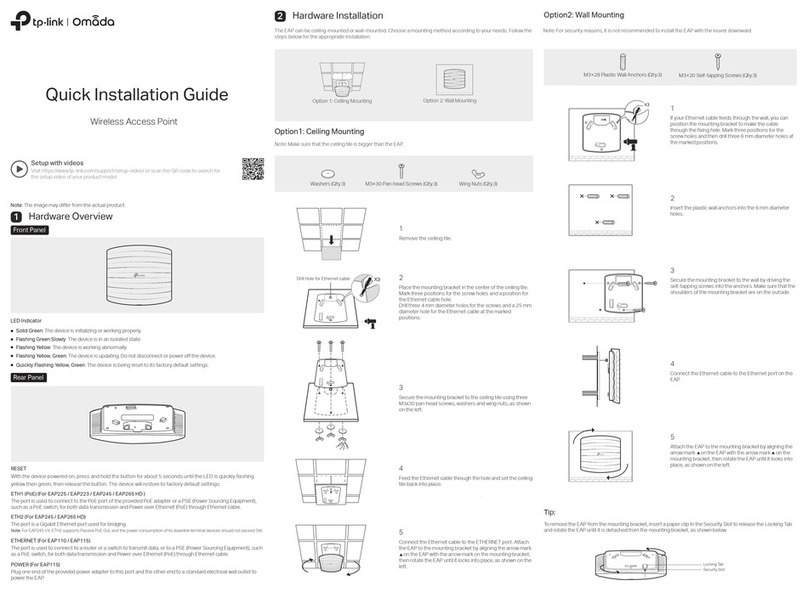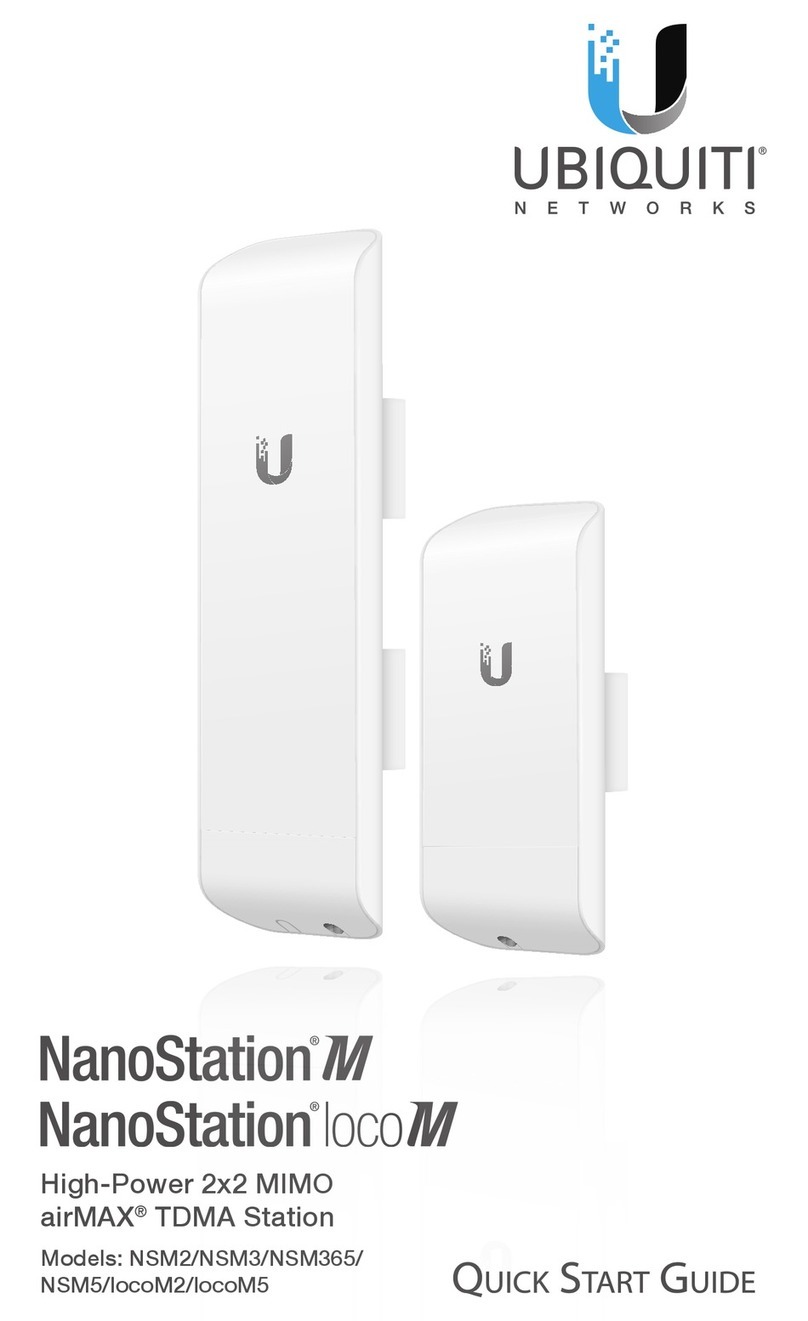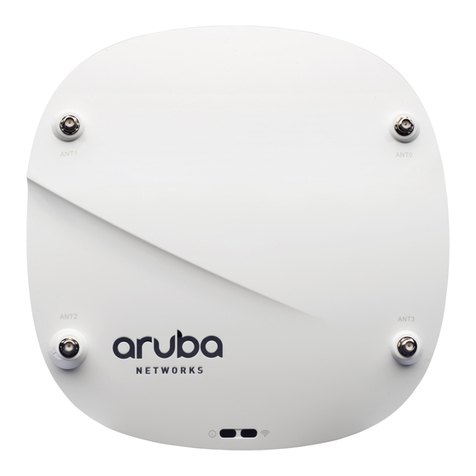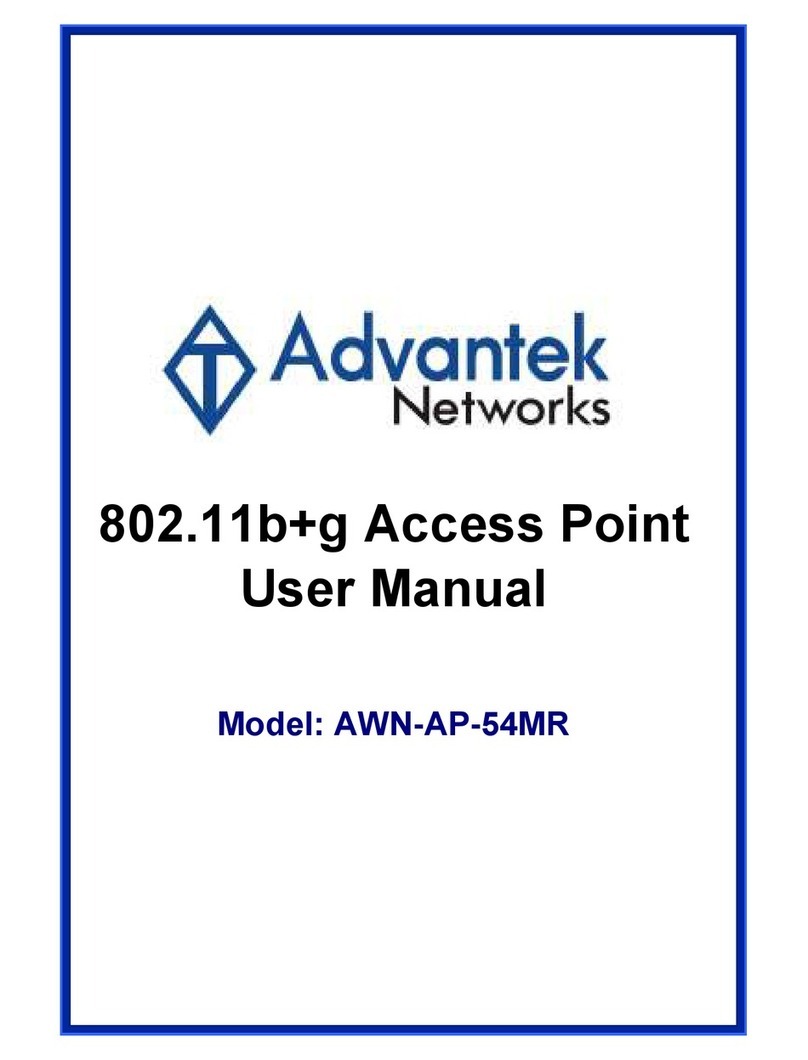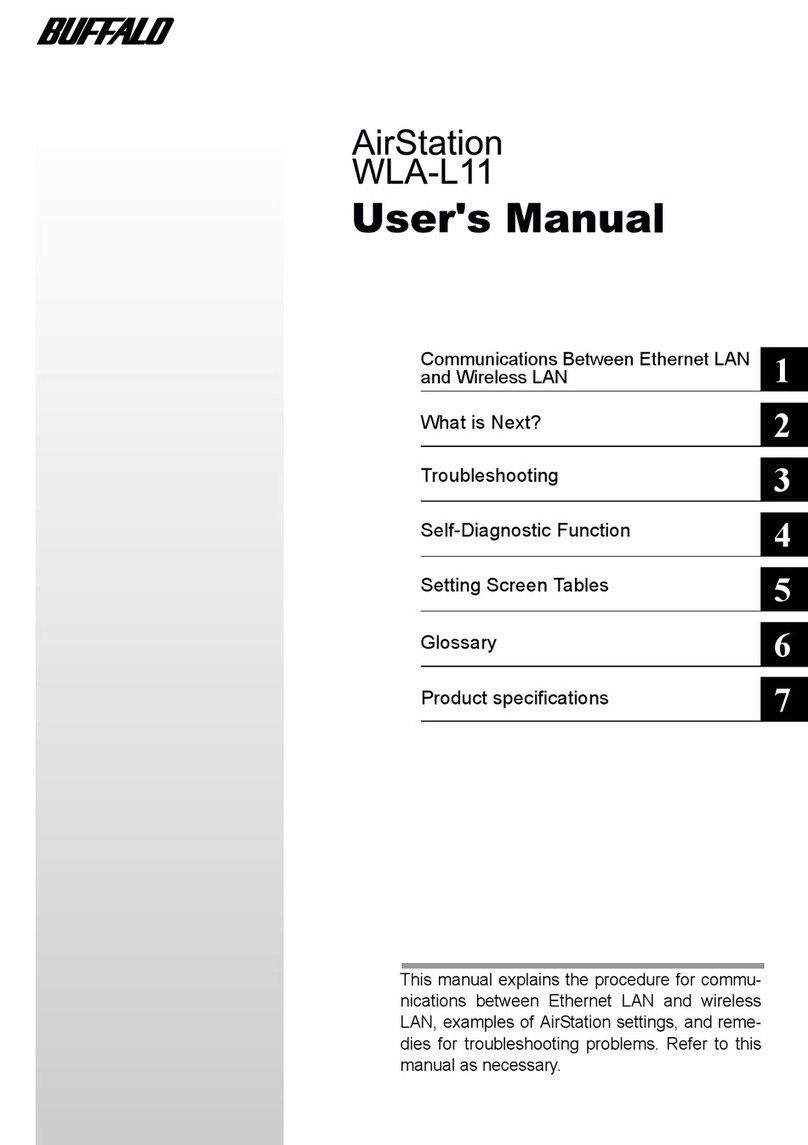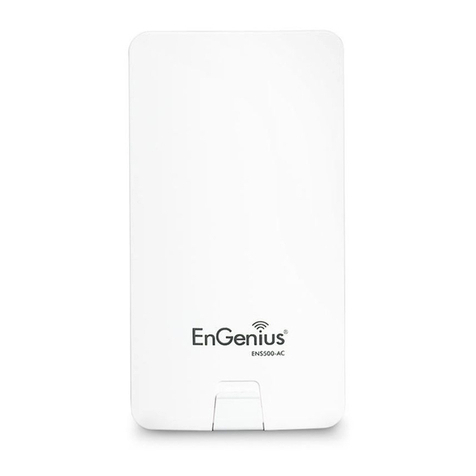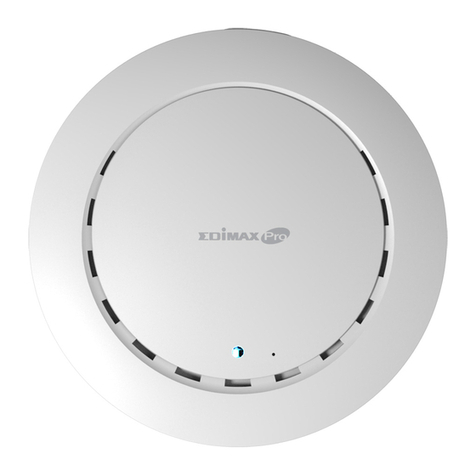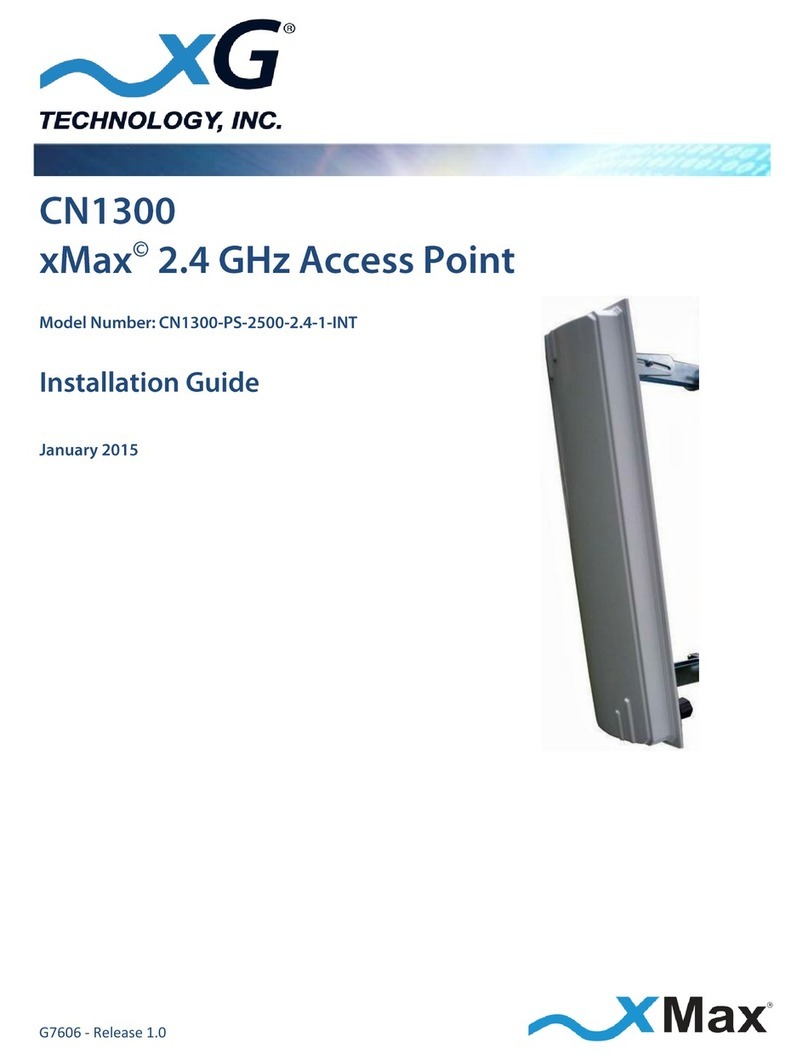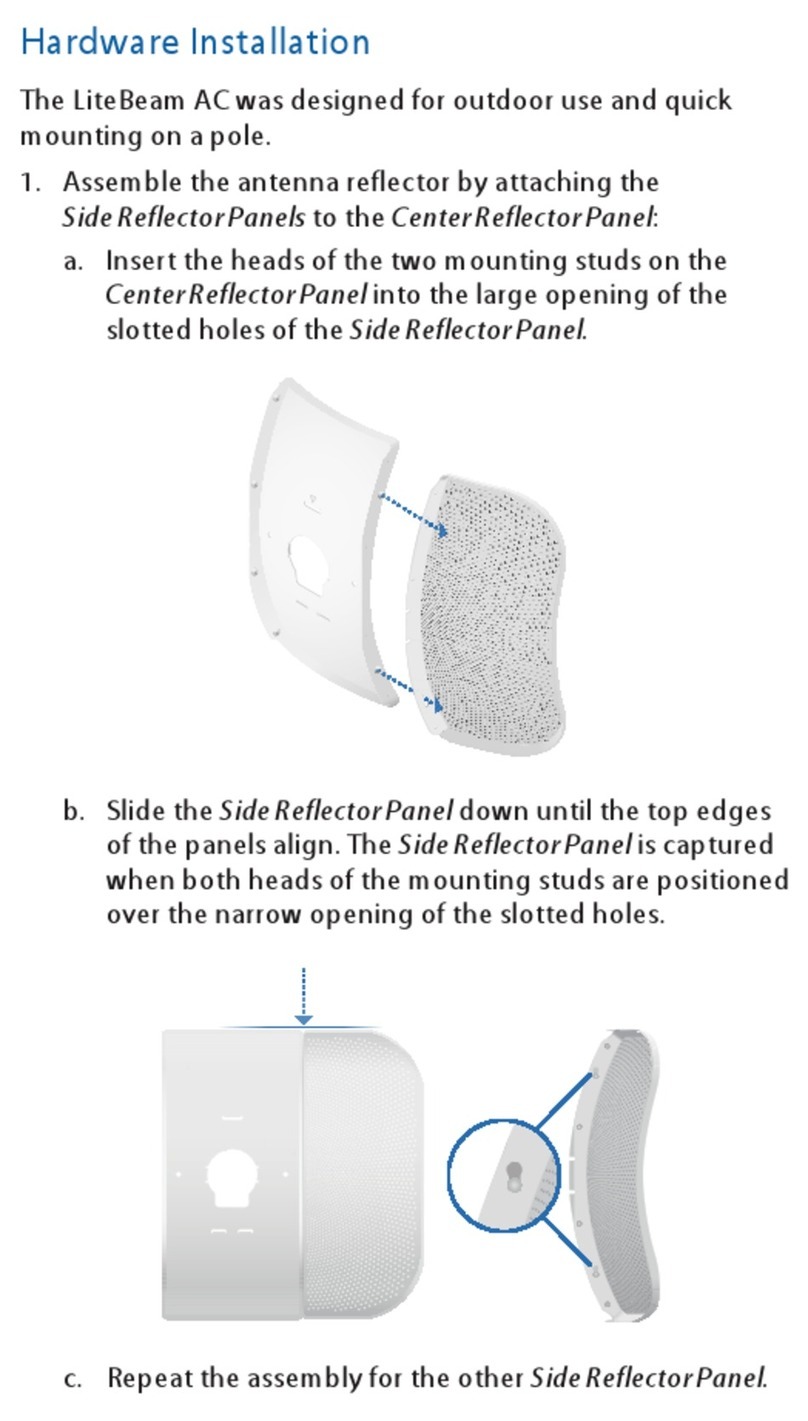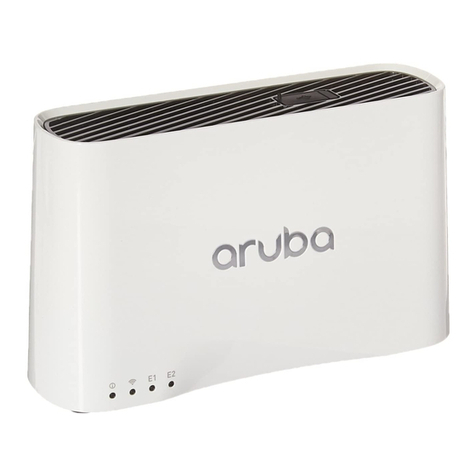6
Wireless Basics
D-Link AirPremierTM AG wireless products are based on industry standards to provide
easy-to-useand compatiblehigh-speedwirelessconnectivitywithinyour home,business
or public access wireless networks. Strictly adhering to the IEEE standard, the D-Link
AirPremierTM AG wireless family of products will allow you to securely access the data
you want, when and where you want it. You will be able to enjoy the freedom that
wirelessnetworkingdelivers.
Awireless local areanetwork (WLAN) is a cellularcomputer network thattransmits and
receives data with radio signals instead of wires. Wireless LANs are used increasingly
in both home and office environments, and public areas such as airports, coffee shops
anduniversities.Innovativeways to utilize WLANtechnologyarehelpingpeople to work
and communicate more efficiently. Increased mobility and the absence of cabling and
otherfixed infrastructure haveproven to bebeneficial for manyusers.
Wireless users can use the same applications they use on a wired network. Wireless
adapter cards used on laptop and desktop systems support the same protocols as
Ethernetadapter cards.
Peopleuse wireless LAN technology for many differentpurposes:
Mobility -Productivity increases when people have access to data in any location
within the operating range of the WLAN. Management decisions based on real-time
informationcan significantly improveworker efficiency.
Low Implementation Costs -WLANs areeasytosetup,manage,changeandrelocate.
NetworksthatfrequentlychangecanbenefitfromWLANseaseofimplementation.WLANs
can operate in locations where installation of wiring may be impractical.
Installation and Network Expansion - Installing a WLAN system can be fast and
easy and can eliminate the need to pull cable through walls and ceilings. Wireless
technology allows the network to go where wires cannot go - even outside the home or
office.
Inexpensive Solution - Wireless network devices are as competitively priced as
conventionalEthernetnetworkdevices.
Scalability - WLANs can be configured in a variety of ways to meet the needs of
specific applications and installations. Configurations are easily changed and range
fromPeer-to-Peer networks suitablefor a small number ofusers to largerinfrastructure
networkstoaccommodatehundredsorthousandsofusers,dependingonthenumberof
wirelessdevicesdeployed.
